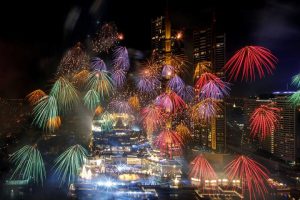And who were those Demanding Customers?
In 1917, the brothers set up in a larger plant at Elizabeth, New Jersey, to turn out aircraft and tractor engines as well. The following year, the brothers built a Bugatti-inspired 180-cubic-inch straight-eight with single overhead camshaft and three valves per cylinder. In 1919, a special 16-cylinder Duesenberg engine pushed a Land Speed Record car to 158 mph on the sands at Daytona Beach, Florida — astounding for the day. In 1921, this engine powered the only American car ever to win the French Grand Prix. But this business was soon overshadowed by new triumphs in automobile racing.

So despite its astonishing performance, the Model J was primarily a super-luxury conveyance able to run in eerie silence, as customers demanded. Well, only 470 chassis and 480 engines were built between 1929 and 1936, so the clientele was, at least, Rembrandt Hotel Bangkok – click through the next internet site – exclusive. Some ads emphasized the fact. And who were those demanding customers? These contained not a word of hype, nor specifications — not even a picture of the car.
Both cars survive today, though as museum pieces, and there’s still no definitive information on their performance. But again, confusion reigns. Supercharged JNs gained the logical SJN designation. Another Model J offshoot was the JN — introduced in 1935. An attempt to give a more-modern look to an aging design, the JN was equipped with smaller 17-inch-diameter wheels (versus 19 inches), skirted fenders, bullet-shaped taillights, and bodies set on the frame rails for a lower look. Blowers were later removed from some SJs, while others were added to originally unblown models. But they must have been shattering, what with relatively lean bodies, 400-horse “ram’s horn” engines, and chassis 17 inches shorter than standard.
A wide-open SJ with exhaust cut-out throbbed more than extroverts could endure, but with a closed exhaust cut-out it was little louder than a healthy Cadillac Sixteen. Both were first driven by movie stars. Only two Model Js came close to being “sports cars,” a pair of specials unofficially referred to as SSJ. The first was owned by Gary Cooper. Both were built by the Cord-owned Central Manufacturing Company, using the La Grande name, on “short” 125-inch wheelbases. The second was loaned to Clark Gable as a demonstrator, but was not purchased by Gable.


